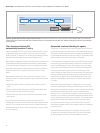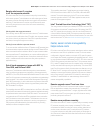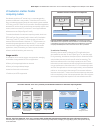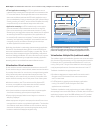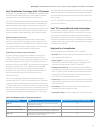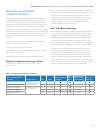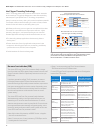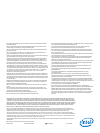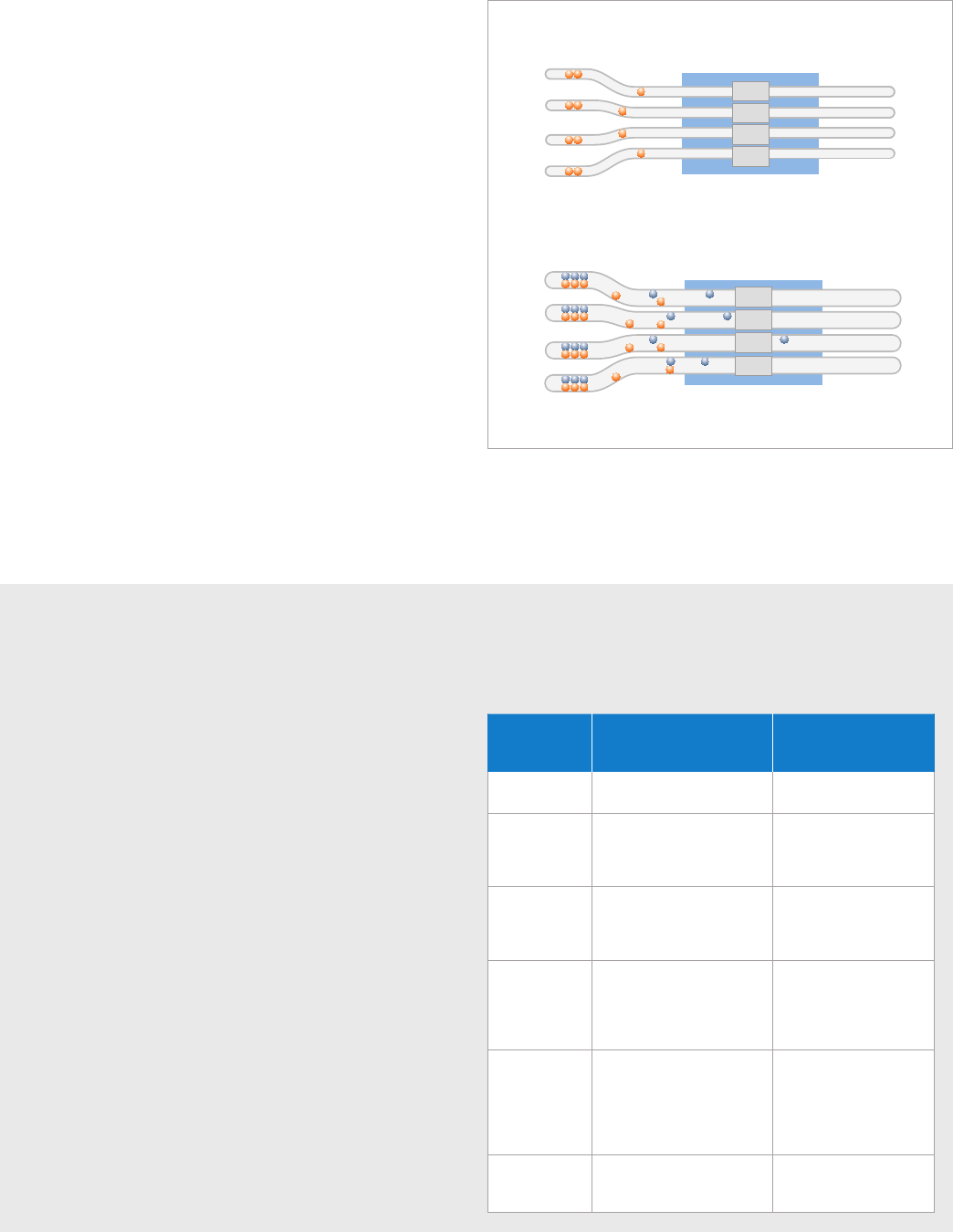
24
White Paper: The All New 2010 Intel® Core™ vPro™ Processor Family: Intelligence that Adapts to Your Needs
Intel® Hyper-Threading Technology
Intel HT Technology allows each processor core to work on two tasks
at the same time. This typically doubles the number of threads being
executed (see Figure 8). With Intel HT Technology, computational
latency is reduced, and every clock cycle is used to its optimum potential.
For example, while one thread is waiting for a result or event, another
thread can execute in that core, minimizing down cycles.
With faster performance, users can get more accomplished in less time.
This results in a more efficient use of processor resources – higher
processing throughput – and improved performance on the multi-
threaded applications of today and tomorrow. Businesses can now:
• Run demanding desktop applications simultaneously without
slowing down.
• Reduce the burden of security applications that process in the
background, minimizing their impact on productivity, yet still keep
systems more secure, efficient, and manageable.
• Provide headroom for future business growth.
No more front-side-bus (FSB)
The all new 2010 Intel® Core™ vPro™ processor family no longer
has a front-side bus (FSB). Instead, these processors enhance Intel®
Smart Cache with a shared L3 (last level) cache that can be up to
8 MB in size.
In previous generations of Intel® Core™ processors, an external
bi-directional data bus (the FSB) was used to keep instructions
and traffic flowing quickly to the processor. However, as processors
have grown more powerful and as the number of processing cores
has increased, the FSB has become a limiting factor for the speed
at which a microprocessor and its execution cores can access
system memory.
The all new 2010 Intel Core vPro processor family eliminates
this bottleneck by adding a new high-speed interconnect, and
embedding an L3 cache into the microarchitecture. L3 cache is
shared across all processor cores. Key benefits of L3 cache include
more opportunities to take advantage of hyper-threading, and an
increase in overall performance while reducing traffic to the cores.
A new 2010 Intel Core vPro processor includes:
• New fully inclusive, fully shared up to 8 MB L3 cache – all applica-
tions can use the entire cache
• New L2 cache per core, for very low latency: 256 KB per core for
handling data and instructions
• Same L1 cache as previous Intel® Core™ microarchitecture:
32 KB instruction cache, 32 KB data cache
For new 2010 Intel Core vPro processors, look for an L3 designation
instead of an FSB number.
Specication What it means
For best performance
in the new generation
of processors, look for:
Clock speed Measures how fast a proces-
sor processes data.
Faster (higher number)
Intel®
Smart Cache
Technology
Level 3 cache, which is
shared between the cores,
speeds up data accesses and
reduces data bottlenecks.
More (higher number)
FSB An interconnect used in
previous-generation Intel®
Core™ processor-based PCs.
None (the FSB has
been replaced with a new
higher speed interconnect
and shared L3 cache)
Intel® Turbo
Boost
Technology
3
Dynamically accelerates
performance up to 20%
faster (if processor load
allows) when faced with
a demanding task.
Faster (higher number)
Multicore
designation
The number of cores
available for processing
data. Multiple cores allows
for faster multitasking and
improved performance with
multi-threaded applications.
More (higher number)
Intel® Hyper-
Threading
Technology
6
The number of tasks
that can be executed
simultaneously.
More (higher number)
Figure 8. Intel® Hyper-Threading Technology allows each core to
execute two threads at the same time. This can dramatically increase
performance for heavily threaded OSs and applications, such as
Microsoft Windows* 7 and Microsoft Office* 2007.
THREAD 1
THREAD 2
THREAD 3
THREAD 4
Core
Core
Core
Core
Core
Core
Core
Core
THREAD 1
THREAD 2
THREAD 3
THREAD 4
THREAD 5
THREAD 6
THREAD 7
THREAD 8
Most multi-core processors enable you to execute one software thread per processor core
A new 2010 Intel® Core™ i7 vPro™ processor doubles the number of software threads that
can be processed at one time
Intel® Core™2 Quad Processor,
the previous-generation Intel® Core™ Processor
New 2010 Intel® Core™ i7 vPro™ Processor
with Intel® Hyper-Threading Technology




